A Brief Herstory of Gum Shoe Gals, Spy-Fi Sheroes, and Private Dick Chicks: Part Two
Jennifer K. Stuller on April 7, 2011 in UncategorizedEach of the three characters I talked about have been described in terms of male icons of popular culture. Modesty Blaise and Tara Chace have both been called a “female James Bond.” And Ms. Tree was conceived as the “female Mike Hammer.”
Now, Bond and Hammer have clearly become cultural embodiments of specific archetypes – the British spy and the American hardboiled detective, respectively.
But rarely does one hear of male characters being described in terms of iconic female characters. Additionally, to say that someone is a “female spy” or a “woman detective” continues to reinforce the idea that male identities are the default position.
Questions I invited the audience to consider during the presentation were:
• If male characters define these archetypes, what does it look like when women fill those roles?
• Are these female characters simply superimposed on to their male source material?
• And is the idea that they are possibly female versions of male characters narrative novelty? A mere gimmick?
• Or does the fact that they are unconventional bodies in traditional positions mean that they are capable of challenging assumptions about gender? And does that alone make them feminist?
After meeting these three characters, we were able to revisit these questions with a bit more context – with the intention of further exploring them together during the Q&A.
Modesty Blaise, one of my favorite heroes in popular culture, is a survivor, a force of nature, an ex-crime boss, and a loyal friend.
She was born out of glamour girl strips and British espionage stories—but Modesty is neither a nearly-naked ditz, nor, as she has often been called, a “female Bond.”
She is one of the great literary characters of the 20th Century.
Peter O’Donnell, who passed away just last year, created the character and was her only writer. Prior to her debut in 1963, he wrote other newspaper strips, as well as romantic serials for women’s magazines.
Modesty was drawn by the talented, Jim Holdaway—until his untimely death.
Even though other capable artists took over – it was his work that was the most exquisite.
Modesty was inspired by a encounter O’Donnell had with a young female refugee while he was stationed in Persia during World War II in which his unit shared rations with her.
His fictional character, was also a refuge, an orphan from Hungary who traveled alone until she met a Jewish man in his fifties at a displaced persons camp.
He became her teacher and traveling companion.
Upon his death, Modesty made her way to Tangiers, where she ran a roulette table at a casino, before becoming the leader of a crime syndicate called the Network – at age 19.
But Modesty had her own sense of morality, and made sure The Network never dealt in vice. Those who disobeyed this rule through the sale of drugs, women, or children were delivered to the authorities or their graves.
A man named Willie Garvin was Modesty’s right arm in The Network, and is her closest companion. She is his “Princess.”
The pair have been called “criminals with hearts of gold,” a description which is only partly true, as when we first meet them, Modesty and Willie are retired from crime.
More accurately, they’ve always walked a fine line between criminality and heroism—always leaning towards the moral side, if not necessarily the legal one.
They occasionally do favors for a dear friend in the British Secret Service.
But Modesty is no one’s agent, and where she goes Willie follows.
Over the years Modesty branched out into other media. A terrible, terrible movie was released in 1966. In fact, we took a few minutes so everyone coulds get an idea of just how very awful it is.
Peter O’Donnell once said of the film, “It makes my nose bleed to think of it.”
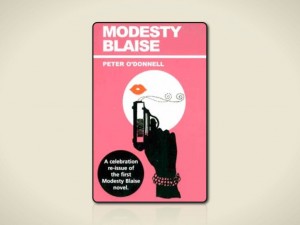
O’Donnell, was able to turn his original screenplay for the movie into the first of a series of 11 novels. As well as two collections of short stories detailing Modesty and Willie’s exploits and adventures – including their eventual demise.
Since the original Modesty Blaise fiasco, several prominent creators of popular culture, including Neil Gaiman, Luc Besson, and Quentin Tarantino, have expressed interest in making an adaptation that would remain truer to its source.
Tarantino was tangentially involved in a B-movie made over 18 days in Bucharest called, My Name is Modesty. Which is actually pretty good.
It features an original story, which O’Donnell was consulted on, and an authentic Modesty – one who is compassionate, resolved, resourceful – and completely full of whoop-ass.
Max Allan Collins notes that the character, Ms. Tree, which he created with Terry Beatty, was partly inspired by Modesty. They were intrigued by the idea of “An American Modesty Blaise” for their detective series, who would be to private eyes what Modesty is to spies.
Their “female Mike Hammer” debuted in 1981 – and thus predated the wave of women PI’s in literature in the 1980s – a fact that gets often gets overlooked, mostly due to the medium of the comic book.
As hard-boiled as they come, Ms. Michael Tree (her father wanted a son) first appeared in a 6-part serialized graphic novel called “I, For an Eye” in Eclipse Magazine, and most recently in the pulp paperback novel, Deadly Beloved.
A true dame of modern noir, the tough talking Ms. Tree was conceived out of Collins’ and Beatty’s love of EC Comics, Dick Tracy, Dragnet, the lone wolf tough guys of Hammett and Chandler . . .
. . . And especially Mickey Spillane’s Mike Hammer.
Ms. Tree, left the police force her father had worked for, to ultimately end up following in her husband’s stead.
First, as his begrudging secretary, and later, as the head of Tree Investigations.
For the physical look of Ms. Tree, they referenced the obscure ‘Mike Hammer’ comic strip from the early 1950s and were inspired by the way Ed Robbins had drawn Velda – Hammer’s Amazonian secretary and eventual lover, who, by the way, was a licensed PI herself. But they’ve noted that even without cartoonist Robbins to light the way, Spillane’s description of Velda had been fairly exact:
To put it even more bluntly, Velda is a brick house.
As Collins and Beatty were fans of Blaise, they additionally referenced Holdaway, and borrowed from Modesty, what Beatty calls that “Velda/Bettie Page/Tura Satana look” noting that “a wasp-waisted, big breasted, long-legged super-heroine figure made no sense in Ms. Tree’s ink and paper universe — especially after her pregnancy!”
They wanted her attractive but strong, feminine, but not girly.
Collins, has often explained the central notion of the Ms. Tree series was a play on the cliché of the tough guy private eye, his loyal secretary, and their unrequited love.
Here, this was rooted specifically in Hammer and Velda – a couple that Spillane had eventually intended to have marry.
In Ms. Tree the comic they do, only for the P.I. to be murdered on their wedding night, leaving the secretary to take over the detective agency and step into her late husband’s shoulder holster.
The private eye’s murder was the former secretary’s first case.
But Ms. Tree became much more than a playful, or even, progressive, gender reversal in a noirish tale of loss and revenge, and her story moved far beyond the confines of a reductive “you-touched-my-stuff” narrative.
Don’t get me wrong – She IS vengeful – and, as Beatty has said – “Female PI’s hadn’t been nearly as gun happy or disturbed as their male counterparts until Ms. Tree came along.”
But, while adhering to tropes of the hard-boiled detective genre, Collins and Beatty also created a complicated character – tough, but tender, feminine but not girly, gun-happy, but feminist.
As argued in Hard-Boiled and High-Heeled this is partially because, “The very concept of the ‘female dick’ asks us to reimagine sex . . . bodies . . . and gender.”
But also because while dealing with the stereotypes of pulpy crime comics, Collins and Beatty wanted to “build some flesh and blood onto them.” So that, for example, Ms. Tree herself was a distinctive tough detective, “not just another refried Philip Marlowe.”
For over 15 consecutive years, and through various publishers, Ms. Tree was the heroine of the longest running detective comic book of all time. She lived . . . loved . . . and lost, as hard-boiled protagonists do, but she was also afforded a complexity denied most female characters in comic books.
Her first case as a P.I. may have been to track down her husband’s killer, but Ms. Tree was never reduced to a widow (or, for that matter, to a cop’s daughter). She was also independent, a killer, a sister, a step-mother, and a dangerous enemy.
She was the respected leader of her own, successful business, and later, a mother, who hunted down baddies while 8 months pregnant . . .
. . . and was even lovingly and beautifully depicted breast-feeding her newborn—a rarity in comics for sure.
As per her creators’ intention, she is not a superhero, and doesn’t know martial arts, but she is smart, resolved, lethal, and a bad-ass babe. She has a gun, and she knows how to use it – happily.
See Part One.
Part Three is next!

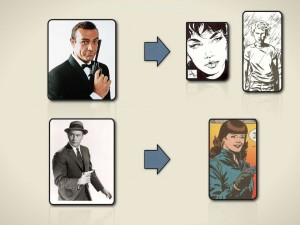
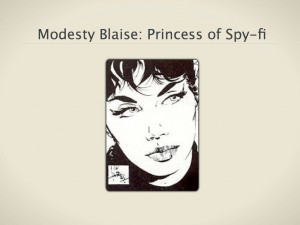
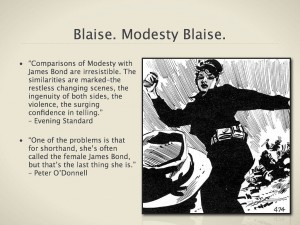
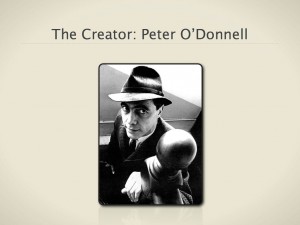

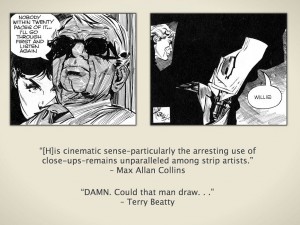
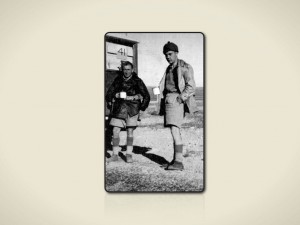
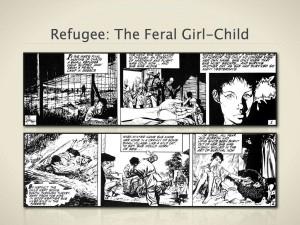
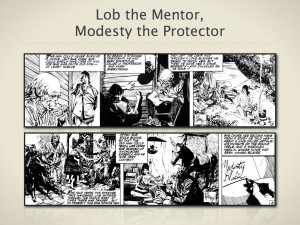
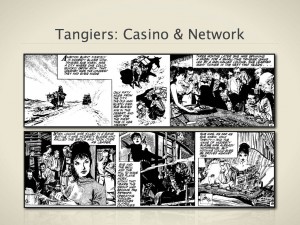
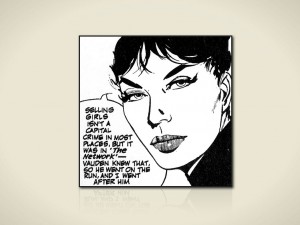
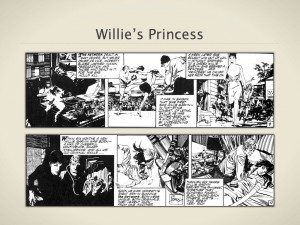
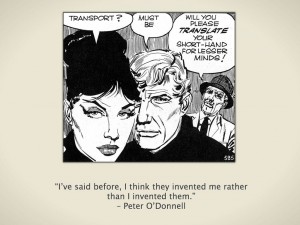
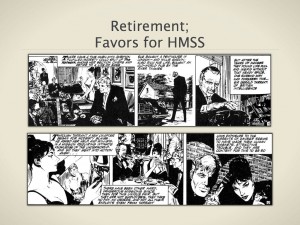
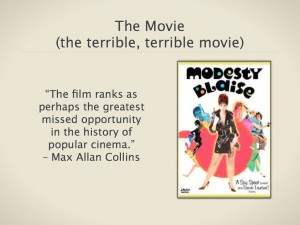

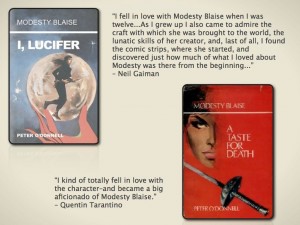

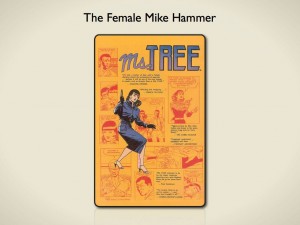
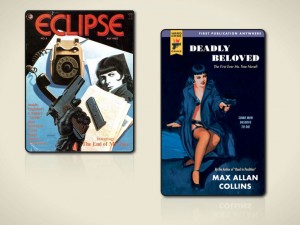

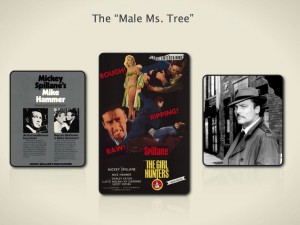


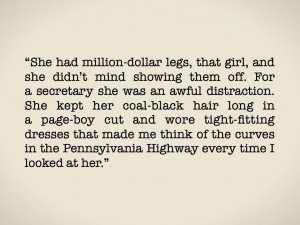


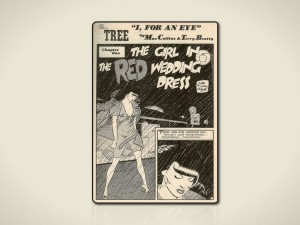
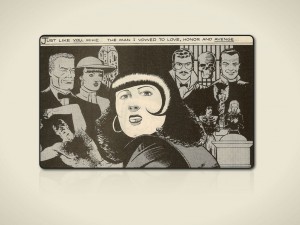
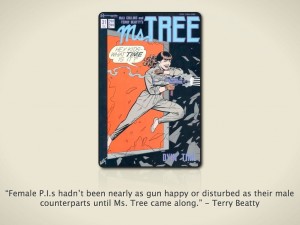


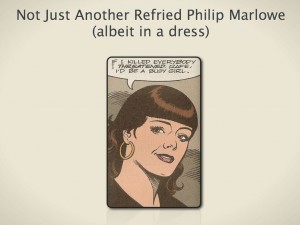

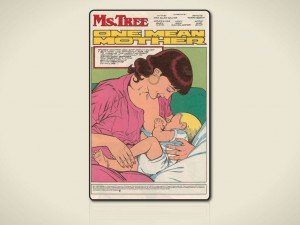
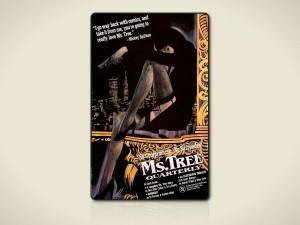
[…] One and Two. Tags: Anne Francis, Comics Arts Conference, Cynthia Martin, G.G. Fickling, Greg Rucka, Honey […]
[…] Part Two – Coming Up! Tags: Anne Francis, Comics Arts Conference, Cynthia Martin, G.G. Fickling, Greg Rucka, Honey West, Ink-Stained Amazon, Ink-Stained Amazons, Jennifer K. Stuller, Lily Renee, Max Allan Collins, Miss Fury, Modesty Blaise, Ms. Tree, Peter O'Donnell, Senoria Rio, sheroes, spies, Tara Chace, Tarpe Mills, Terry Beatty, Trina Robbins, Women Detectives, Wondercon The Ink-Stained Amazon at Wondercon 2011! A Brief Herstory of Gum Shoe Gals, Spy-Fi Sheroes, and Private Dick Chicks: Part Two […]
[…] because I’m a firm believer that questions are the content, before I close, I want to reference those I posited at the beginning of this presentation, now that we have some […]